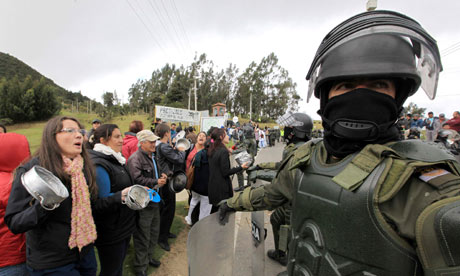By Thomas Hüetlin
Maurice Weiss/ DER SPIEGEL
As
collaborative consumption becomes increasingly mainstream, many young
Germans are starting to see vehicle ownership as inconvenient and
old-fashioned. Keen to keep up, the auto industry is turning to
car-sharing.
Imagine a road trip that starts on a
narrow backstreet in Rome, bathed in the rosy light of dawn. Visualize
driving along roads lined with pine trees, past hill-top villages,
motoring from the ocean to snow-capped mountains. Then on to Paris,
London, and finally to the green hills of Scotland, stretched out before
you like a giant golf course.
Own
a car, and live the dream. Climb into a cozy interior, as familiar and
comfortable as your own living room. Then head out into the great
unknown in search of adventure, away from everyday life, all your senses
thrilling at the grand vistas, the freedom and the speed.
Matthias
Lorenz-Meyer freezes these images on his computer screen with a click
of his mouse. His trip from Rome to Edinburgh lasted three weeks, and
required two tanks of gas. But the vehicle didn't belong to him. It
belonged to Ford. He was paid handsomely for the journey -- the film was
a commercial. He sold his own car, a Renault Twingo, last year. "I'm
glad I got rid of it," he says. "It was a drag."
Lorenz-Meyer is
an advertising model and Internet entrepreneur, not a dropout or a
fanatic. He is one of the many Germans under 40 living in cities who are
both a puzzle and a worry to the auto industry. The reason? They no
longer care about owning their own vehicles.
In Germany, the home of the automobile and where the
auto industry is still a key sector of the economy, this is almost akin to a betrayal.
Around
46 percent of people living in the capital Berlin manage without their
own vehicle. In New York, the figure is as high as 56 percent. Urban
residents who still have vehicles don't use them very often, either. In
Munich, the average vehicle is in use for just 45 minutes a day. The
rest of the time it's just sitting there costing money in insurance,
tax, depreciation and probably parking fees.
Many residents of
larger cities see owning their own vehicle as something they can do
without, as annoying excess baggage. Vehicle sales have dropped
dramatically among the target customers of tomorrow. The purchasers of
new vehicles are getting older. Since 1995, the average age has risen
from 46 to 52.
For young people, other things matter more. "Young
people today want to be mobile, and a cell phone gives them completely
different possibilities when it comes to a vehicle," says Michael
Kuhndt, head of the Wuppertal Institute Collaborating Center on
Sustainable Consumption and Production (CSCP).
In the old days,
the automobile was something everyone had to have. It symbolized
independence and adulthood. These days, young people are geographically
and virtually mobile, for which they need a mobile phone. A vehicle
doesn't help them travel to Honduras, New Zealand or Vietnam.
"Mobile
phones really open up the possibilities for living in various parts of
the world," says Kuhndt. "Young people think of automobiles as too
heavy, too much of a burden."
Fighting Back
The auto industry, unwilling to lose its young customers, is fighting back with
car-sharing
-- hoping to restore interest in the automobile with an alternative
payment system. Mercedes, through its subsidiary car2go, supplies Smarts
in Munich, Hamburg, Cologne, Berlin and elsewhere. BMW supplies Mini
Coopers, BMW 1 Series and X1s through its DriveNow program. Citroën
offers the electric C-Zero through Multicity. And the German railway
company Deutsche Bahn offers various models through its Flinkster
system, from Fiat 500s to Volkswagen Golfs.
Usage is generally
calculated on a time basis: 29 euro cents a minute with car2go, 28 cents
with Multicity, 31 cents a minute with DriveNow. Customers register
with one or more firms, pay a registration fee and receive an electronic
chip by post. Via a smartphone app, they can find out where the closest
vehicle is. When they finish their journey, they park, get out and go.
The bill is then sent by email to their phone. It's an uncomplicated
service that clearly works: At the end of 2011, Germany had around
260,000 registered car-sharers; at the beginning of 2013, there were
already more than 450,000.
According to figures published by the
Fraunhofer Institute, the number of automobiles in Germany will halve by
2050. "The cities are green, pleasant places to live, pedestrian- and
cyclist-friendly; there are ample car-sharing parking spots and cycle
stations at every larger transport hub," say the authors of the study "A
sustainable transport vision for Germany." Even in the United States --
the No. 1 energy consumer among industrial nations -- one shared car
will replace at least eight private passenger vehicles in the future,
according to calculations by the study's authors.
Car-sharing is
part of a social trend in which consumers prefer to share certain items
with each other rather than own them. Smartphones make this possible,
allowing individuals to move around the modern city and get whatever
they need at different points during the day.
The trend reflects
the flexibility of new lifestyles and careers. For Internet entrepreneur
Matthias Lorenz-Meyer, the smartphone forms the center of his
existence. For Constanze Siedenburg, graphic designer and spokesperson
for the Green Party on school and sports policies in Berlin's Pankow
district, life revolves around her local area and family, but as a road
user she has much in common with Lorenz-Meyer. She too has sold her car
and now drives vehicles that don't belong to her. The lifestyle choices
of both the happily single Internet entrepreneur and the
environmentally-aware mother of two illustrate what mobility in major
Western cities could look like in the years to come.
Read More Here























































